Attempting to Reach an Agreement with Your Landlord
Self-Resolution
Zero Deposit
Last Update 4 years ago
During this stage, you and your landlord can exchange offers to attempt to resolve the claim without requiring you to supply evidence or go through adjudication. There are 5 working days to do this, with potential for a further 5 working days if negotiations are still ongoing or have not yet been attempted.
Your landlord will see your response to their claim and can decide whether to accept it or make a counter offer. You can change your initial response or, if your landlord responds, you can decide whether to accept it or make a different counter offer.
A large number of cases are resolved at this stage. It is much quicker than formal adjudication, doesn’t require full evidence submission from both parties, and both you and the landlord have certainty about the result.
If you agree that a claim is owed, but you are unable to pay that amount now, then you can talk to us and we’ll find a different way for you to manage it. Depending on your circumstances, this can include an interest free payment plan.
1. Entering the Negotiation Stage
You, or one of the other tenants, have responded to your landlord’s claim, so we have now moved into the negotiation phase (known as “self-resolution”). You will also receive an email with the subject Thank You for Responding from Zero Deposit ([email protected]). Only the lead tenant (the tenant who responded) is able to take action during this stage.
During this stage, there are two reasons to login into your account:
- You want to change your response to the landlord’s claim; or
- The landlord has reviewed your proposal and responded, but not accepted (we’ll let you know when this happens by emailing you with the subject Landlord Response - Review Now).
The landlord may also accept your initial response or any of your proposals during this stage. You can see how we’ll let you know and what to do below.
Lastly, another tenant may have responded to the claim, but you want to see the latest information. Please see the guidance on logging into your claim account for how to do this.
2(a). If you want to change your response to the landlord’s claim
You can access your account via the button Claim Account in the email you’ve received from us. Login to your account (use the guidance here if you need any assistance).
In the Claim Summary, click on Continue Claim Journey in the top left of the screen to see the latest claim details. You can now see your landlord’s initial claim and the amount you previously agreed to, and choose whether to accept the landlord’s original claim by selecting Accept Claim or changing your response by selecting Don’t Accept Claim.
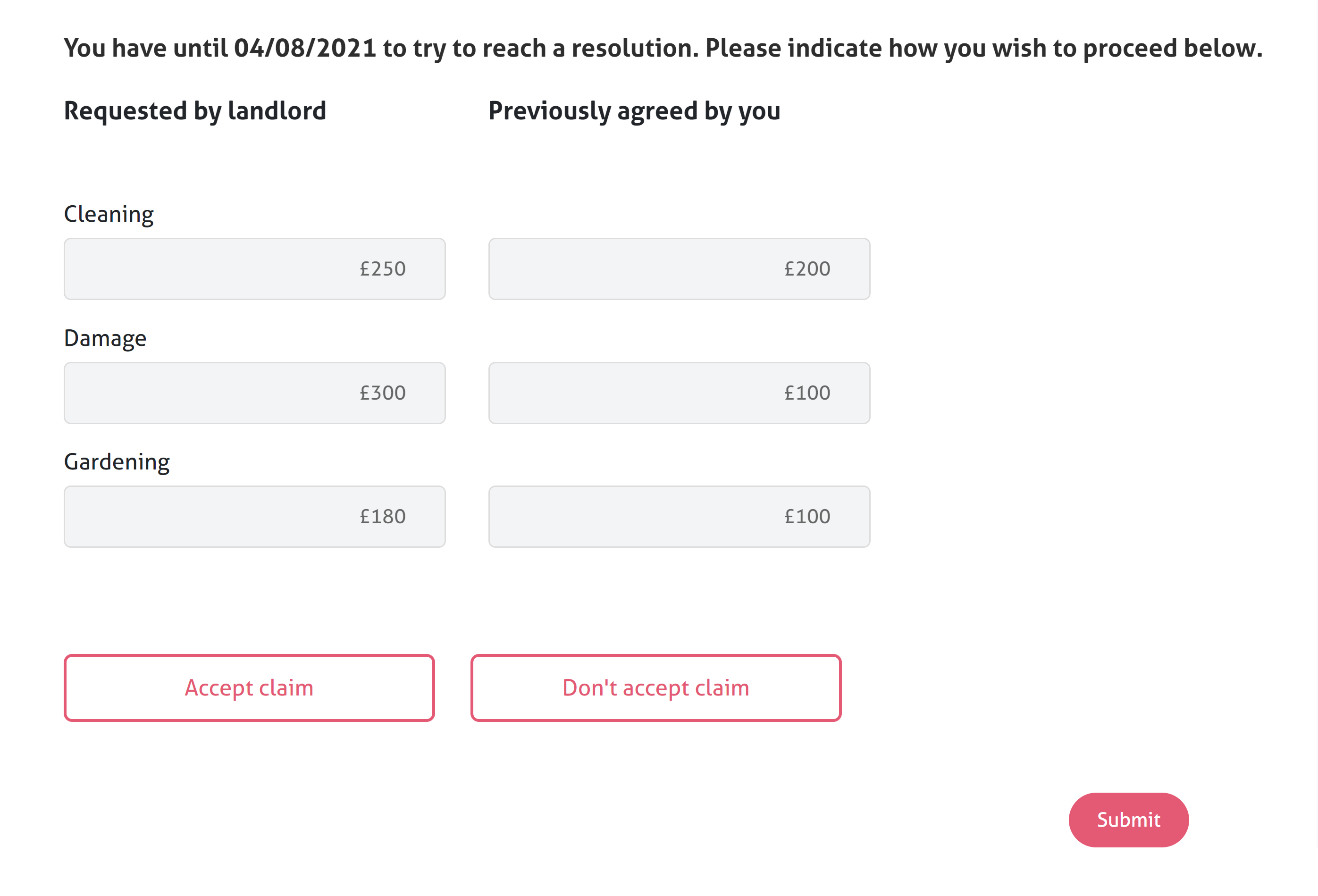
(a) If you accept the claim, then we will confirm the amount due. You should then press the Make Payment button to enter your payment hub. We will also email you with a link to your hub. Find out more about making payment, including how we can support you if you're unable to pay now, in the guidance here.
(b) If you do not accept the claim, then you can amend your response either by changing the number under the header Previously Agreed by You or moving the slider next to the relevant claim element.
Press Submit and we will let the landlord know about the change to your response.
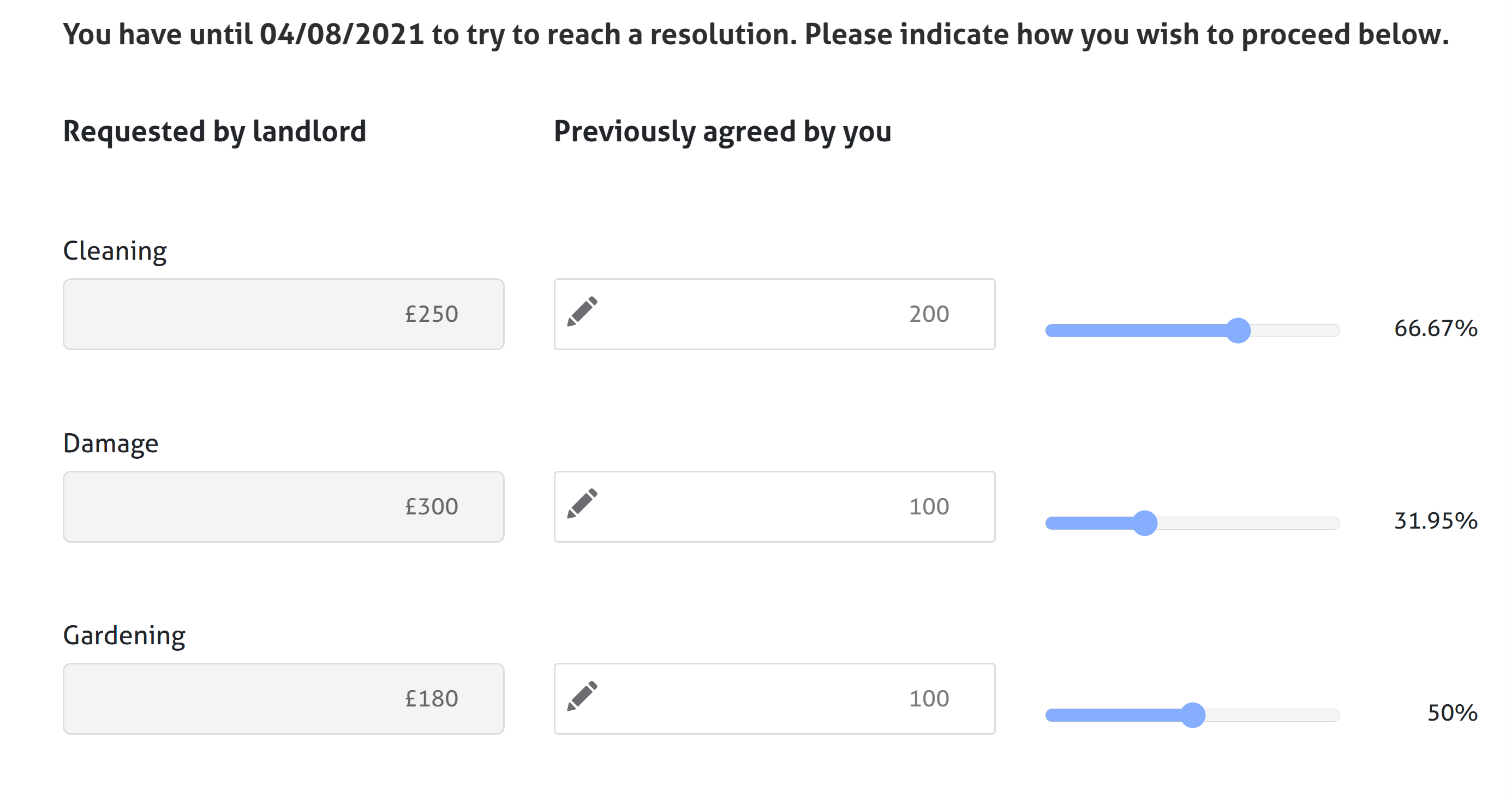
2(b) If the landlord has responded to your proposal
We will let you know by email, with the subject Landlord Response - Review Now. Click the Claim Account button in that email to reach the account login page. Login to your account (use the guidance here if you need any assistance).
On the Claim Summary page, click on Continue Claim Journey in the top left hand corner to see how your landlord has responded.
You can now see what the agent/landlord is requesting in response to your proposal. The overall figure is next to Amount requested by agent/landlord, while you can see this by claim element under Requested by agent/landlord and the specific header, e.g. cleaning. Choose to either accept or reject this new claim amount by clicking on the relevant button and then pressing Submit.
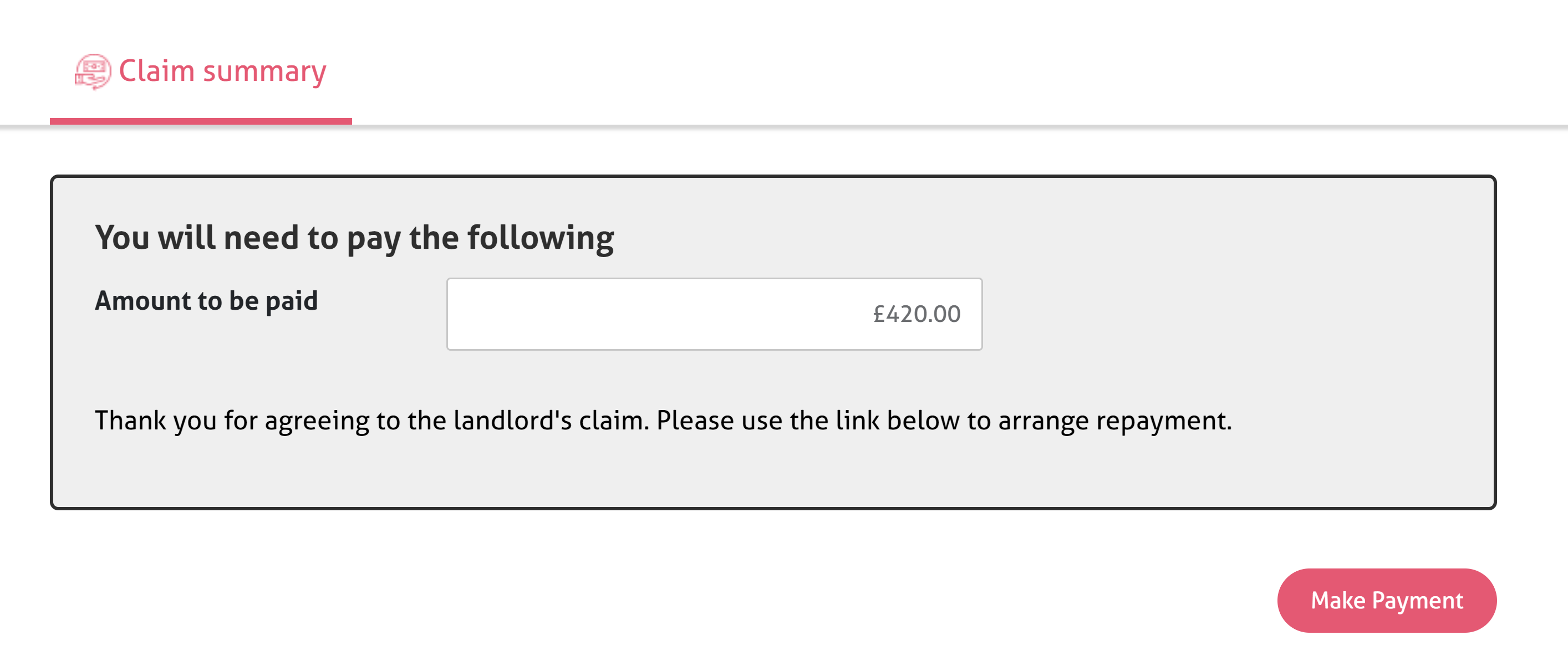
If you do not agree the claim, you can suggest a new amount that you are prepared to offer the landlord. You do this by changing the values under Previously agreed by you or by using the sliders to the right hand side. Press Submit to send your new counter offer to the landlord.
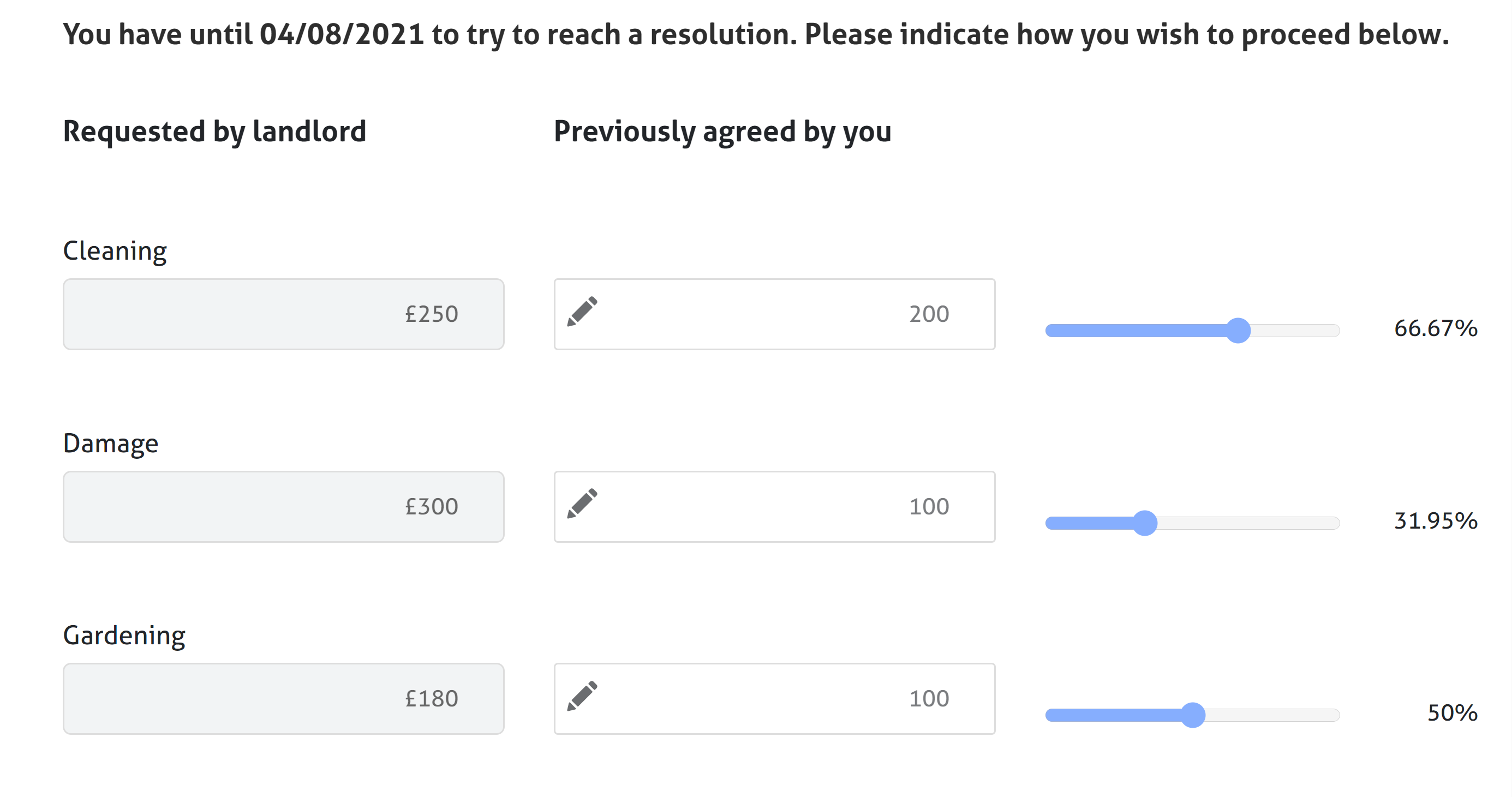
If you want the negotiation to end, even though the landlord may accept your initial response, then you can select It has not been possible to reach an agreement. We don’t recommend this; if you just leave without changing your proposal, then your landlord can still accept your original response. If you do select this option, then we will request an explanation, so we can understand why you are not prepared to attempt to reach agreement. Press Submit to confirm your choice. You will be able to return and change your mind at any time up to the end data for this phase.
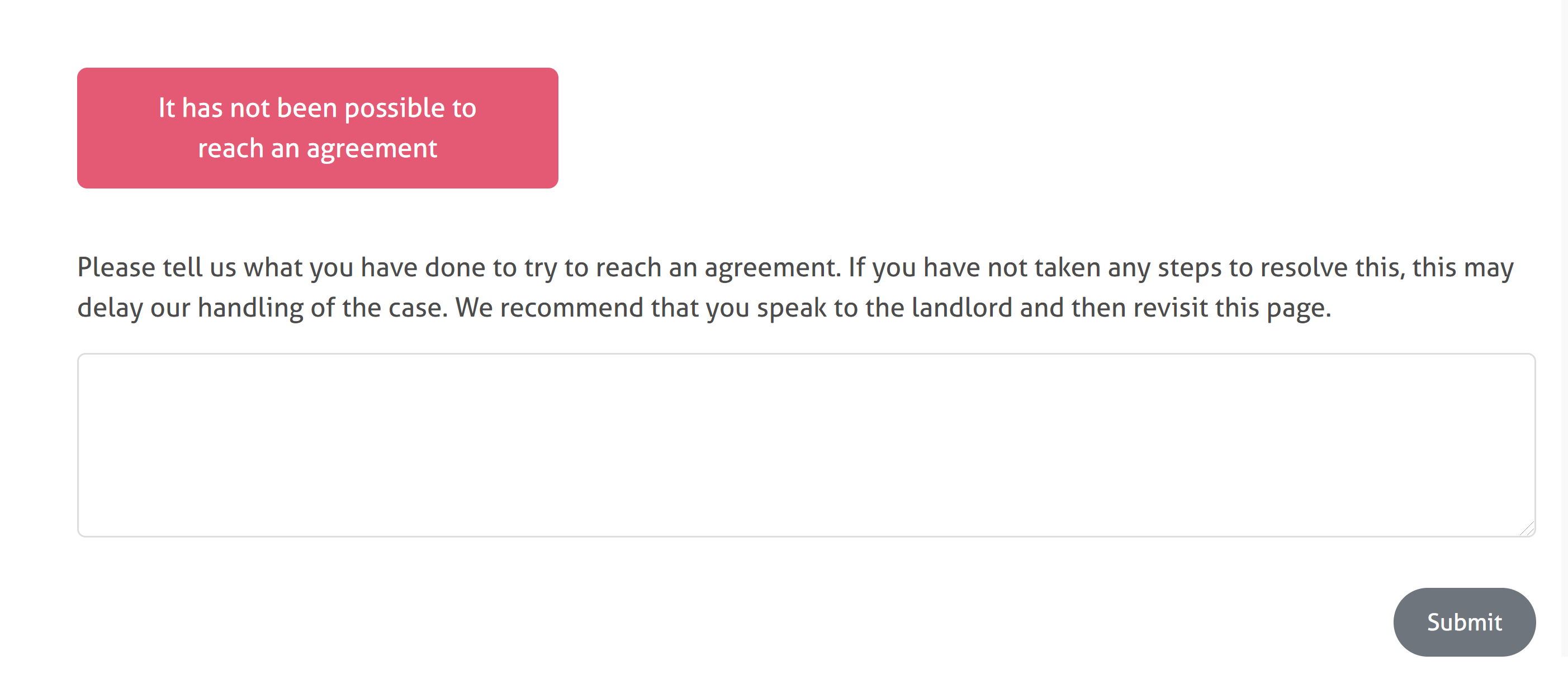
2(c) If the landlord accepts your response
We will email you the good news (the subject will be Your Landlord Has Agreed With Your Proposal - Payment is Now Due) and ask you to make payment, in line with your proposal.
We’ll never ask you to pay more than you can afford: If you are struggling to pay, then we have options to support you, including interest free payment plans. Find out more in our guidance about payment. Please get in touch using the details in that guidance (which are also in the email we send).
3. If an Agreement Can't Be Reached - Next Steps
If it’s not been possible to reach an agreement by the end of this stage, we will ask the landlord or agent to provide the evidence that supports the claim.
They will have 1 week to do this, and we will then ask you to review the evidence and provide any of your own. Guidance on this stage is available under Explaining Why You Disagree with the Claim.

